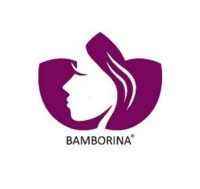Shangó, also known as Changó or Xangó, is a deity in the Yoruba religion, which is practiced mainly in Nigeria and other West African countries. Shango is the god of thunder, lightning, war, justice and virility. In Yoruba mythology, he is represented with a double-edged axe, which is his characteristic symbol, and he is associated with fire and dance.
Shangó is considered an orisha, one of the deities revered in the Yoruba religion. In the religious syncretism of Cuban Santeria and other African American religions, Shangó is related to Saint Jerome, whose Catholic holiday is celebrated on September 30. Followers of Santeria see him as a powerful protector and intermediary between humans and the orishas.
In the cultural and religious imagination, Shangó is seen as a strong and passionate god, but also as a being who punishes injustice and values loyalty and courage. He is a central figure in many Yoruba and African American religious practices, and his influence extends across various forms of spirituality and beliefs.
The relationship between Santa Bárbara and Shangó is an additional example of religious syncretism, especially in some practices of Santeria and other African American religions. In these syncretic traditions, Saint Barbara is identified with Shangó.
Saint Barbara is a Catholic saint revered in the Christian tradition. According to Catholic tradition, Saint Barbara was a Christian martyr who lived in Nicomedia, Asia Minor, during the 3rd century. Several miracles are attributed to her and she is considered the patron saint of firefighters, artillerymen and people who work with explosives. In Christian iconography, Saint Barbara is usually depicted with a tower and a sword, and she is often shown next to lightning or a cloud, which symbolically associates her with thunder and tempest.
In African American syncretic traditions, Saint Barbara is syncretized with Shangó due to the perceived similarities between the characteristics and attributes of both figures. Both are considered protective and associated with lightning and thunder, as well as justice and bravery.
The colors associated with Shango are mainly red and white:
1- Red: This color represents the passion, energy, power and virility of Shango. It also symbolizes strength, determination and bravery.
2- White: White symbolizes the purity, justice and wisdom of Shango. It also represents clarity, honesty and peace.
In Santeria and other African-American religious practices that venerate Shangó, various offerings are offered as part of the rituals dedicated to this orisha. These offerings can vary depending on the specific tradition and individual preferences of the practitioners, but some common offerings include:
1-Food: Foods that are considered sacred to Shangó are offered, such as bananas, plantains, corn, guavas, pomegranates, eggplants and goat or chicken meat.
2-Drinks: Drinks such as red wine, rum and brandy are offered, which are considered appropriate to honor Shangó.
3-Tabaco: Tobacco is considered sacred in many African American traditions, so offering cigars or tobacco in smoke form is a common practice in rituals dedicated to Shango.
4-Candles: Red and white candles are especially significant as offerings to Shango, as these are the colors associated with him. Lighting candles during rituals is a way to invoke their energy and protection.
5-Musical instruments: Shangó is associated with music and dance, so musical instruments such as drums and bells are often offered to him as part of rituals in his honor.
It is important to note that respect and devotion are essential when making offerings to any deity, and that practitioners often follow specific guidelines established by their religious traditions and teachings.
